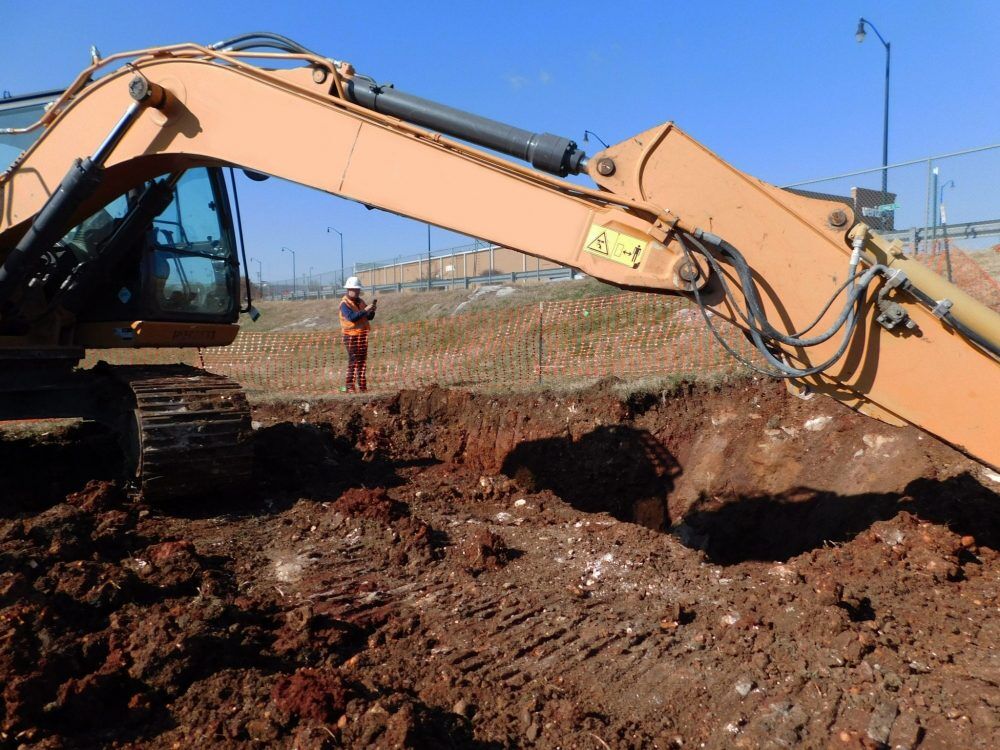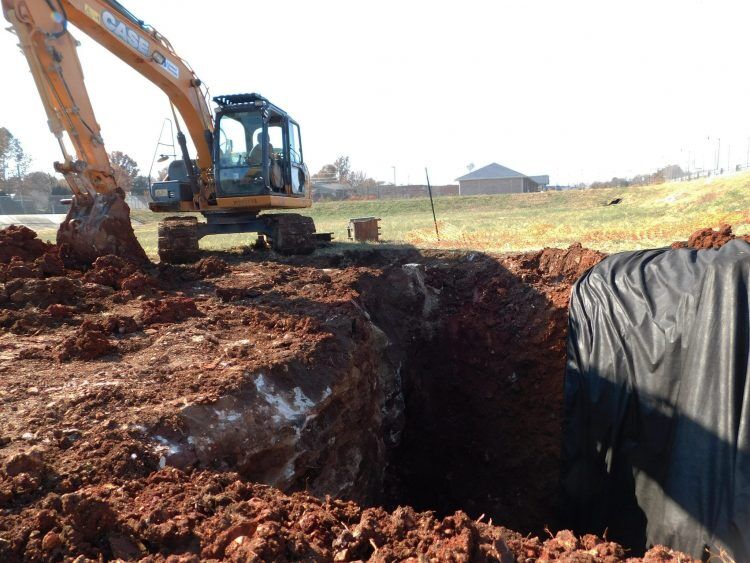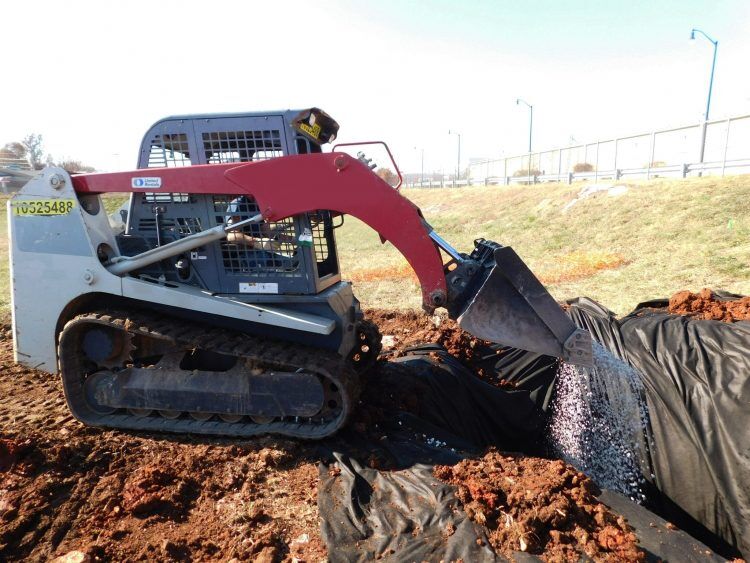When a sinkhole mitigation job at a department store in Greene County, Missouri, turned into the remediation of a complex karst geology site, Environmental Works, Inc.’s Investigation/Remediation (I/R) team had to get creative and work closely with regulators to determine how it was going to get the job done.

EWI Completes Complicated Sinkhole Mitigation in Greene County, Missouri
The scope of work began as an excavation, fill, and cap of what was expected to be a roughly five-foot deep sinkhole within a stormwater detention basin. Zach Adams, a field project manager and geologist with EWI, figured it would be a standard job. That is, until he watched as a mini excavator operated by EWI Heavy Equipment Operator and CDL Driver Doug May began digging and removing clay, and digging and removing clay, and digging and removing clay. Eventually, Adams had to call in a full-size excavator with a longer reach. Still, after excavating the sinkhole to 20 feet, which was the maximum reach of the equipment, EWI couldn’t find the bottom, or “eye” of the sinkhole.
“Typically there would be an ‘eye’ that everything is falling into,” said Adams.
During the excavation process, a weathered wall of limestone was unearthed that spanned the southern edge of the sinkhole, with its top located just below the surface of the ground. Bobbilynne Koepke, RG, I/R senior project manager, studied the formation and determined that the limestone rock shelf was the primary “failure” point along which the sinkhole formed, where surface water infiltrated the hole along the face of the ledge.
“But with a bedrock ledge so close to the surface, it was puzzling that the excavation was so deep without finding bottom,” said Koepke.
That was, until Matt Forir, the Greene County Geologist providing regulatory oversight for the project, reviewed the county’s GIS (geographic information system) database and provided EWI with some pertinent and invaluable geologic information. The site was close to multiple faults, indicating that the feature at the site was likely a deep joint associated with one of those faults.
“We were on a fracture,” Adams said. “The (bedrock) joint just kept going down and down and down. In that area, it could go down to 90 or 100 feet of just clay.”
 To complicate the excavation further, a sanitary sewer line was identified by a utility locator west of the sinkhole, another bedrock ledge (the opposite side of the fracture) was encountered along the northern edge of the sinkhole, and a former sinkhole repair was identified east of the sinkhole. These obstacles combined to prevent EWI from “benching” down to excavate deeper.
To complicate the excavation further, a sanitary sewer line was identified by a utility locator west of the sinkhole, another bedrock ledge (the opposite side of the fracture) was encountered along the northern edge of the sinkhole, and a former sinkhole repair was identified east of the sinkhole. These obstacles combined to prevent EWI from “benching” down to excavate deeper.
Benching is a method of protecting employees from cave-ins by excavating the sides of an excavation to form one or a series of horizontal levels or steps, usually with vertical or near-vertical surfaces between levels, according to the Occupation Safety and Health Administration (OSHA).
With all of these considerations, and with the sinkhole known to be at a depth of at least 25 feet and potentially much deeper, EWI collaborated with the regulator to come up with an alternative remediation plan.
“Typically, with a sinkhole site we breach the ‘eye’ with large rock, and then use graded layers of rock to backfill the hole. However, with no ‘eye’ in sight, we determined it was more important to have a substantial soil cap over the sinkhole, to push storm water away from it and prevent surface water from infiltrating down along the edge of that bedrock shelf,” noted Koepke.
 Once the plan was approved by the property owner, EWI got to work. The on-site team lined the sides of the excavation with geotextile matting and backfilled the hole with a ½ inch dry clean rock meant to reduce the tumbling of water and limit additional erosion.
Once the plan was approved by the property owner, EWI got to work. The on-site team lined the sides of the excavation with geotextile matting and backfilled the hole with a ½ inch dry clean rock meant to reduce the tumbling of water and limit additional erosion.
Geotextiles are permeable fabrics which, when used in association with soil, have the ability to separate, filter, reinforce, protect or drain. They are typically made from polypropylene or polyester.
The rock was backfilled up to grade with the two bedrock ledges and topped with more geotextile matting. Then, the team covered the entire excavation with a compacted clay cap, ensuring that the cap overlapped the southern bedrock ledge at least 18 inches to prevent additional vertical migration of stormwater runoff along the face of that ledge. The team was able to reuse the clay that had been excavated from the sinkhole as part of the soil cap, reducing the amount of material that had to be hauled to the site, which provided a cost savings to the client.
“It was definitely a different type of sinkhole than we’d normally run into,” said Adams. “(The sinkhole) was at such great depth that we had to come up with a different remediation plan.”
The field work took one full week to complete, said Adams, adding that he enjoyed the project.
“I was told that it was the type of sinkhole you only find one or two times in your career as a geologist,” he said.




